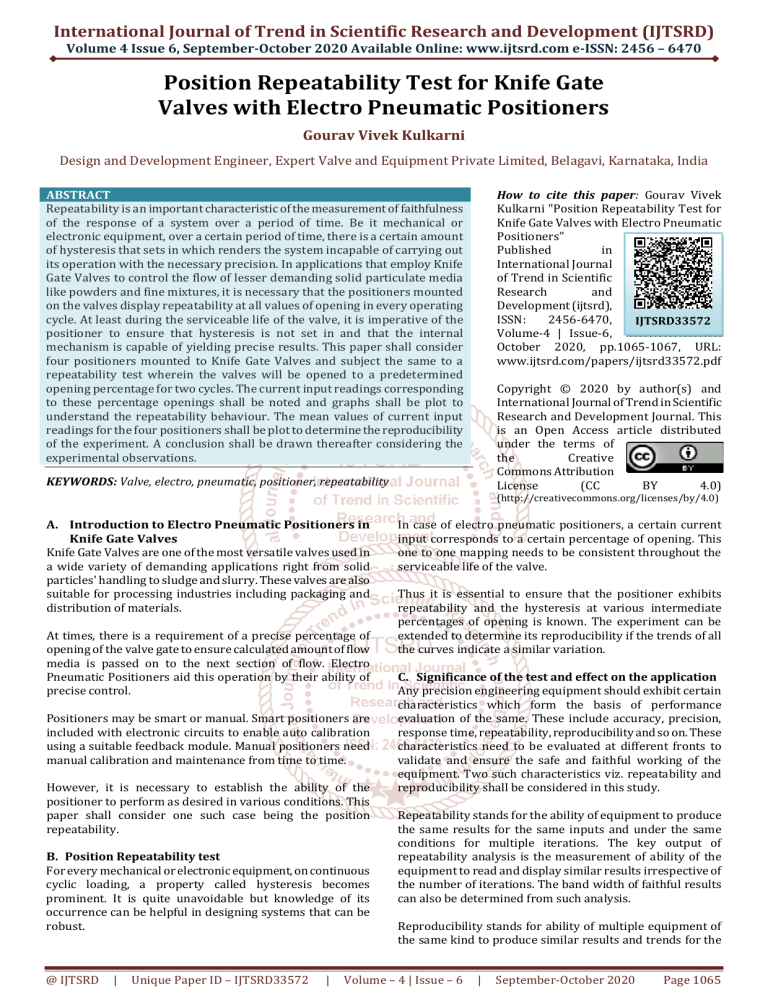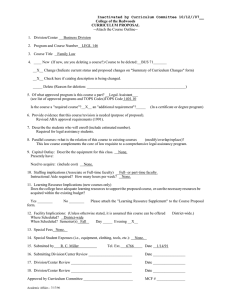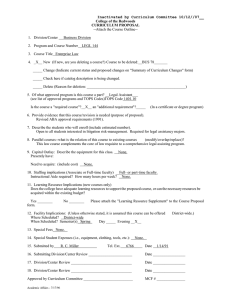
International Journal of Trend in Scientific Research and Development (IJTSRD)
Volume 4 Issue 6, September-October 2020 Available Online: www.ijtsrd.com e-ISSN: 2456 – 6470
Position Repeatability Test for Knife Gate
Valves with Electro Pneumatic Positioners
Gourav Vivek Kulkarni
Design and Development Engineer, Expert Valve and Equipment Private Limited, Belagavi, Karnataka, India
How to cite this paper: Gourav Vivek
Kulkarni "Position Repeatability Test for
Knife Gate Valves with Electro Pneumatic
Positioners"
Published
in
International Journal
of Trend in Scientific
Research
and
Development (ijtsrd),
ISSN:
2456-6470,
IJTSRD33572
Volume-4 | Issue-6,
October 2020, pp.1065-1067, URL:
www.ijtsrd.com/papers/ijtsrd33572.pdf
ABSTRACT
Repeatability is an important characteristic of the measurement of faithfulness
of the response of a system over a period of time. Be it mechanical or
electronic equipment, over a certain period of time, there is a certain amount
of hysteresis that sets in which renders the system incapable of carrying out
its operation with the necessary precision. In applications that employ Knife
Gate Valves to control the flow of lesser demanding solid particulate media
like powders and fine mixtures, it is necessary that the positioners mounted
on the valves display repeatability at all values of opening in every operating
cycle. At least during the serviceable life of the valve, it is imperative of the
positioner to ensure that hysteresis is not set in and that the internal
mechanism is capable of yielding precise results. This paper shall consider
four positioners mounted to Knife Gate Valves and subject the same to a
repeatability test wherein the valves will be opened to a predetermined
opening percentage for two cycles. The current input readings corresponding
to these percentage openings shall be noted and graphs shall be plot to
understand the repeatability behaviour. The mean values of current input
readings for the four positioners shall be plot to determine the reproducibility
of the experiment. A conclusion shall be drawn thereafter considering the
experimental observations.
Copyright © 2020 by author(s) and
International Journal of Trend in Scientific
Research and Development Journal. This
is an Open Access article distributed
under the terms of
the
Creative
Commons Attribution
License
(CC
BY
4.0)
KEYWORDS: Valve, electro, pneumatic, positioner, repeatability
(http://creativecommons.org/licenses/by/4.0)
A. Introduction to Electro Pneumatic Positioners in
Knife Gate Valves
Knife Gate Valves are one of the most versatile valves used in
a wide variety of demanding applications right from solid
particles' handling to sludge and slurry. These valves are also
suitable for processing industries including packaging and
distribution of materials.
At times, there is a requirement of a precise percentage of
opening of the valve gate to ensure calculated amount of flow
media is passed on to the next section of flow. Electro
Pneumatic Positioners aid this operation by their ability of
precise control.
Positioners may be smart or manual. Smart positioners are
included with electronic circuits to enable auto calibration
using a suitable feedback module. Manual positioners need
manual calibration and maintenance from time to time.
However, it is necessary to establish the ability of the
positioner to perform as desired in various conditions. This
paper shall consider one such case being the position
repeatability.
B. Position Repeatability test
For every mechanical or electronic equipment, on continuous
cyclic loading, a property called hysteresis becomes
prominent. It is quite unavoidable but knowledge of its
occurrence can be helpful in designing systems that can be
robust.
@ IJTSRD
|
Unique Paper ID – IJTSRD33572
|
In case of electro pneumatic positioners, a certain current
input corresponds to a certain percentage of opening. This
one to one mapping needs to be consistent throughout the
serviceable life of the valve.
Thus it is essential to ensure that the positioner exhibits
repeatability and the hysteresis at various intermediate
percentages of opening is known. The experiment can be
extended to determine its reproducibility if the trends of all
the curves indicate a similar variation.
C. Significance of the test and effect on the application
Any precision engineering equipment should exhibit certain
characteristics which form the basis of performance
evaluation of the same. These include accuracy, precision,
response time, repeatability, reproducibility and so on. These
characteristics need to be evaluated at different fronts to
validate and ensure the safe and faithful working of the
equipment. Two such characteristics viz. repeatability and
reproducibility shall be considered in this study.
Repeatability stands for the ability of equipment to produce
the same results for the same inputs and under the same
conditions for multiple iterations. The key output of
repeatability analysis is the measurement of ability of the
equipment to read and display similar results irrespective of
the number of iterations. The band width of faithful results
can also be determined from such analysis.
Reproducibility stands for ability of multiple equipment of
the same kind to produce similar results and trends for the
Volume – 4 | Issue – 6
|
September-October 2020
Page 1065
International Journal of Trend in Scientific Research and Development (IJTSRD) @ www.ijtsrd.com eISSN: 2456-6470
similar pattern of outputs and same conditions for single or
multiple iterations. By this, the performance of an array of
equipment can be validated.
Smart Positioner. The results obtained have been presented
graphically in the following sections.
E.A.
Position Repeatability test for valve 1 of 4
D. Testing Procedure
Following step by step testing procedure can be followed to
carry out the experiment and note the results. It may be
noted that zero error of measuring instruments if any, needs
to be accurately accounted corresponding to the rated
operating range and least count of the same.
Step 1: Complete the electrical circuit connections according
the instructions manual in the presence of trained personnel.
Following diagram may be used as a reference.
Thus it can be observed that the trend of variation in current
corresponding to the opening is similar for the four iterations
undertaken thereby displaying repeatability of performance.
E.B.
Position Repeatability test for valve 2 of 4
Step 2: By operating the Pot ‘P’, keep the valve in closed
position i.e. 0.0% opening and note down the current reading
in the Ammeter
Step 3: Operate the pot until the display on the Electro
pneumatic Positioner reads 25.0 i.e. 25% opening. Note down
the current reading in the Ammeter
Step 4: Operate the pot until the display on the Electro
pneumatic Positioner reads 50.0 i.e. 50% opening. Note down
the current reading in the Ammeter
Step 5: Operate the pot until the display on the Electro
pneumatic Positioner reads 75.0 i.e. 75% opening. Note down
the current reading in the Ammeter
Step 6: Operate the pot until the display on the Electro
pneumatic Positioner reads 100.0 i.e. 100% opening. Note
down the current reading in the Ammeter. This completes
half the cycle
Thus it can be observed that the overall trend of variation in
current corresponding to the opening is similar. For an
opening of 50%, there is an average deviation of 0.25 mA
which is acceptable. For an opening of 75%, the average
deviation is 0.5 mA which is accepted taking into account the
degree of precision of the variable pot. Thus the desired
repeatability is observed in this Positioner.
E.C.
Position Repeatability test for valve 3 of 4
Step 7: Repeat the same procedure of noting the current
reading successively for 75%, 50%, 25% and 0% thus
completing one cycle i.e. two iterations
Step 8: Carry out one more cycle and note the readings as
observed
Step 9: Compile the results and comment on repeatability of a
Positioner and reproducibility of the experiment in total
E. Results and Discussions
This section shall include the compilation of observations
with respect to the repeatability for various percentage
opening. The data has been presented in the form of graphs
for enhanced comprehension and associated visualization.
The make of Electro Pneumatic Positioners used for this
experiment was SIEMENS and the model used was 6DR5223
@ IJTSRD
|
Unique Paper ID – IJTSRD33572
|
Thus it can be observed that, all the corresponding current
readings for the respective valve opening percentages are in
complete agreement with each other across the iterations
carried out. Thus the positioner shows complete repeatability
for the iterations carried out.
Volume – 4 | Issue – 6
|
September-October 2020
Page 1066
International Journal of Trend in Scientific Research and Development (IJTSRD) @ www.ijtsrd.com eISSN: 2456-6470
E.D.
Thus from the Reproducibility Chart, it can be observed that
the overall trend of variation of mean current with increase in
the opening percentage is same for all the positioners.
Variations are observed in the mean values at particular
opening percentages with a major deviation of 3 mA for
particular positioner wherein individual repeatability is
confirmed, thus making the deviation acceptable. This
dictates that the experiment is reproducible and the results
obtained from the same are faithful within the acceptable
limits.
Position Repeatability test for valve 4 of 4
Thus it can be observed that the positioner exhibits an
average deviation of 0.5 mA at an opening of 75% across the
iterations which is acceptable while at all the other openings,
there is complete agreement among the readings and
repeatability is observed accordingly.
E.E.
Positioner Reproducibility Analysis
Conclusion
Thus it can be concluded that the Repeatability of the Electro
pneumatic Positioner is verified from the experiments
conducted. On compiling the results, it was found that the
experimental procedure produces reproducible results and
that the same can be employed in future for validation.
Acknowledgement and disclaimer
The author thanks Management and Staff of Expert Valve and
Equipment Private Limited, Belagavi, Karnataka for their
continuous support and inputs to come up with this work.
This paper in no means intends to advertise or promote any
brand or make of electro pneumatic positioners. The models
and brands considered have been chosen at random to
ensure applicability of the experimental procedure and
results thereof to a wide variety of similar equipment.
@ IJTSRD
|
Unique Paper ID – IJTSRD33572
|
Volume – 4 | Issue – 6
|
September-October 2020
Page 1067




